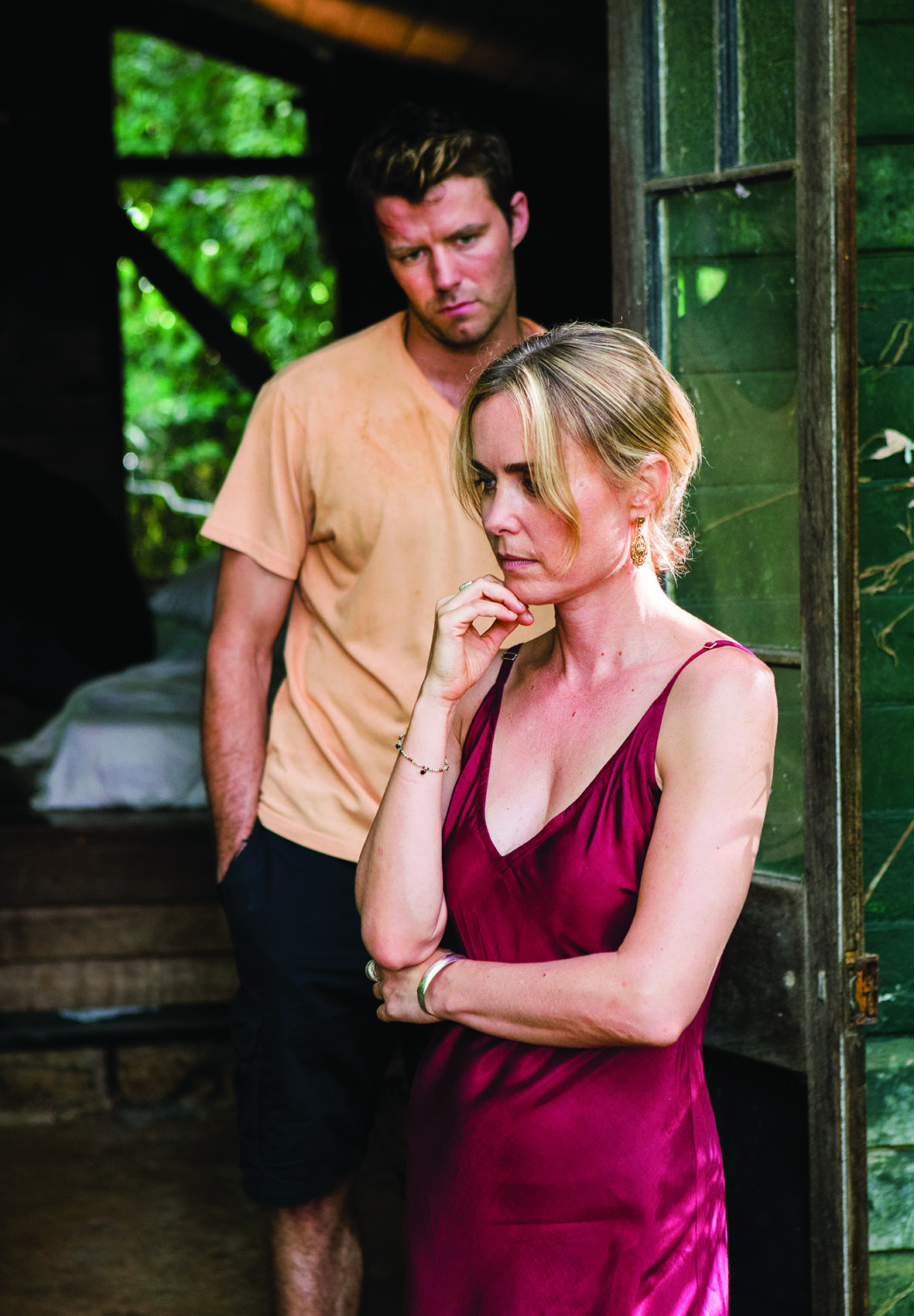Memories of happiness lost haunt the script of Brisbane-based writer/director Ben Hackworth’s sophomore feature, Celeste (2018) – both on the page and between the lines during its writing process.
Radha Mitchell stars as the eponymous opera singer, who gave it all up for love just as her career was reaching its high notes. Retiring to a crumbling but fecund and fanciful retreat in Far North Queensland, she finds herself, years later, all but alone after her husband’s death a decade earlier, hitting the bottle hard and dreaming of a comeback. This unfortunate event is clouded in half-glimpsed mystery, teased out in flashback and connected to her estranged stepson Jack, played by Kai Lewins as a teen and by In Like Flynn (Russell Mulcahy, 2018) lead Thomas Cocquerel as an adult. With shades of lonely, tragic female figures like Charles Dickens’ jilted spinster Miss Havisham, Celeste is a nuanced creation who still burns with a creative passion that’s very much alive; the film paints her as nurturing a genuine care for those around her, if occasionally punctuated by jealous outbursts and self-indulgent introspection.
Critic Neil Young, reviewing the film for The Hollywood Reporter after its debut at last year’s Melbourne International Film Festival (MIFF), describes the titular character as
[e]xuding a brittle wistfulness […] Mitchell’s fortysomething Celeste nevertheless manages to combine elements of a Norma Desmond [Gloria Swanson in Sunset Boulevard, Billy Wilder, 1950] and Blanche DuBois [Vivien Leigh in A Streetcar Named Desire, Elia Kazan, 1951] to absorbing effect.[1]Neil Young, ‘Celeste: Film Review | Melbourne 2018’, The Hollywood Reporter, 15 August 2018, <https://www.hollywoodreporter.com/review/celeste-1133416>, accessed 24 October 2018.
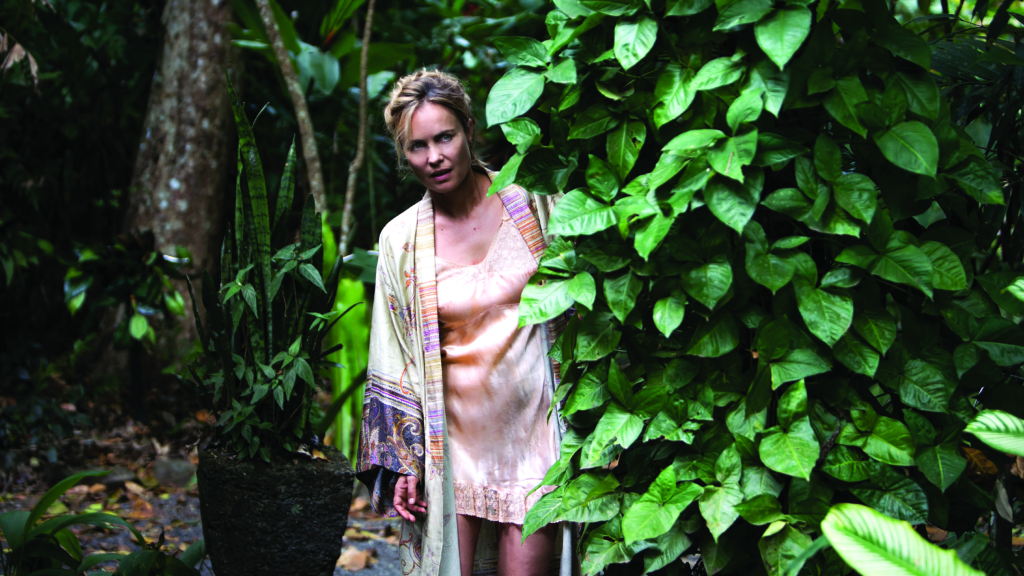
It’s no surprise that Hackworth’s love of cinema was sparked, at least in part, by his older sister’s enthusiastic embrace of Hollywood classics like Broadway drama All About Eve (Joseph L Mankiewicz, 1950) and swooping romance Doctor Zhivago (David Lean, 1965). But, while he admits to having drawn on some of their melodramatic themes in Celeste, he insisted on writing a lead that stood apart from the types of female characters in films from this era. ‘Celeste’s very mercurial, like a character from All About Eve or Sunset Boulevard. She’s capricious, too obsessive,’ he tells me.
But she’s also very generous. There is an element of [melodrama], but the film has this modern edge that’s playing against that. Celeste is singing this dying artform, in this decaying world, and there is, in that, a kind of implicit reference – but with a much more simple approach in the performance, music and sound design. Not with the big strings of an old Hollywood movie […] We needed the modern, intensive humour and weirdness that life has.
‘Celeste’s very mercurial, like a character from All About Eve or Sunset Boulevard. She’s capricious, too obsessive. But she’s also very generous. There is an element of [melodrama], but the film has this modern edge that’s playing against that.’
—Ben Hackworth
This emotional richness hasn’t been lost on the audience. Critic Sarah Ward, for instance, writing for Screen Daily, describes Hackworth’s approach as
cognisant of the melodramatic familiarity in the story’s broad strokes, which follow in the footsteps of Rainer Werner Fassbinder’s great female-led films, but always taking the time to revel in the emotional details. It’s an approach that gives the film’s characters room to grow, and its performances along with them, immersing the audience in a heady mix of loss, love, loyalty, redemption and deep-felt yet ever-shifting bonds.[2]Sarah Ward, ‘Celeste: Melbourne Review’, Screen Daily, 9 August 2018, <https://www.screendaily.com/reviews/celeste-melbourne-review/5131456.article>, accessed 24 October 2018.
Undoubtedly, Mitchell imbues Hackworth’s creation – co-written with fellow Queenslander Bille Brown, the late star of stage and screen as well as celebrated playwright – with an incandescent heart, albeit one hanging heavy with sorrow.
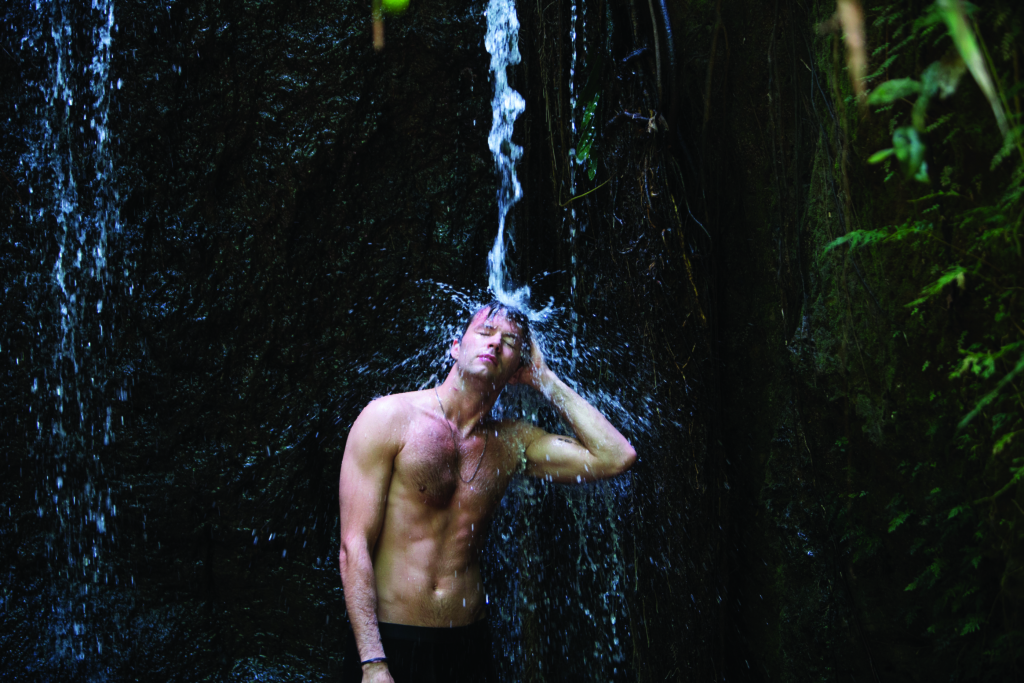
Hackworth acknowledges that melodrama was certainly a component of the original elevator pitch, a sure way to get backers hooked, but recounts actively working to counter the genre’s hoary tropes during filming (‘Radha, [Thomas] and I were all looking for ways to eschew that,’ he recalls). Indeed, the attractively unkempt setting in which the film was shot – the spectacular surrounds of the 1930s-built, Spanish-inspired Paronella Park, 18 kilometres from Innisfail – delivered more than enough drama on its own, not least through the known presence of crocodiles (though they remained resolutely hidden, including during risky water shots). Yet Hackworth suggests that Mitchell could quite easily have gone all out if required: ‘She hates being too big, and I remember, in rehearsals, she was like—’ (here, he adopts a loose approximation of Mitchell’s richly rounded vocals) ‘—“Oh, let me just play it too big to show you what it would be like.” It was funny. Sometimes you have to go there in order to go back.’
Back to love
Hackworth’s heart, too, harbours a certain sadness when discussing the project. While they were working on Celeste’s final draft over Christmas 2012, Brown – a Royal Shakespeare Company alumnus who began his career at the Queensland Theatre Company, alongside Geoffrey Rush – was diagnosed with bowel cancer. At the time, the older man was staying with Hackworth’s mother, one of his closest friends; he had also been a constant mentor to the filmmaker. ‘Working with Bille was great,’ Hackworth muses.
He’s from that old school of the Royal Shakespeare Company with Ian McKellen [and] Helen Mirren […] so he had this ability to tap into the Western canon. He read all of my shorts, too, and he pushed me towards endings where I wasn’t always willing to go. Sometimes, you need a teacher for those things. We can become fearful, as filmmakers, but then you find someone like Bille and it pushes you to be braver.
‘Working with Bille was great … he pushed me towards endings where I wasn’t always willing to go. Sometimes, you need a teacher for those things. We can become fearful, as filmmakers, but then you find someone like Bille and it pushes you to be braver.’
—Ben Hackworth
In 2013, two days after celebrating his sixty-first birthday, Brown – who had been appointed a Member of the Order of Australia for his services to the performing arts in 2011 – died in hospital. It was a cruel blow, Hackworth says, though he remembers fondly the happy times they shared together.
All of his close friends came over: Neil Armfield was there, and Geoffrey, and it all happened very suddenly […] but, luckily, we were all able to have this wonderful birthday celebration with him. They were all there for him in his last days, and it was actually beautiful but sad because you always think, ‘What if?’ […] I guess the thing is, when people die, they are always with you through other people and the connections you made [with] them even after they have passed away.
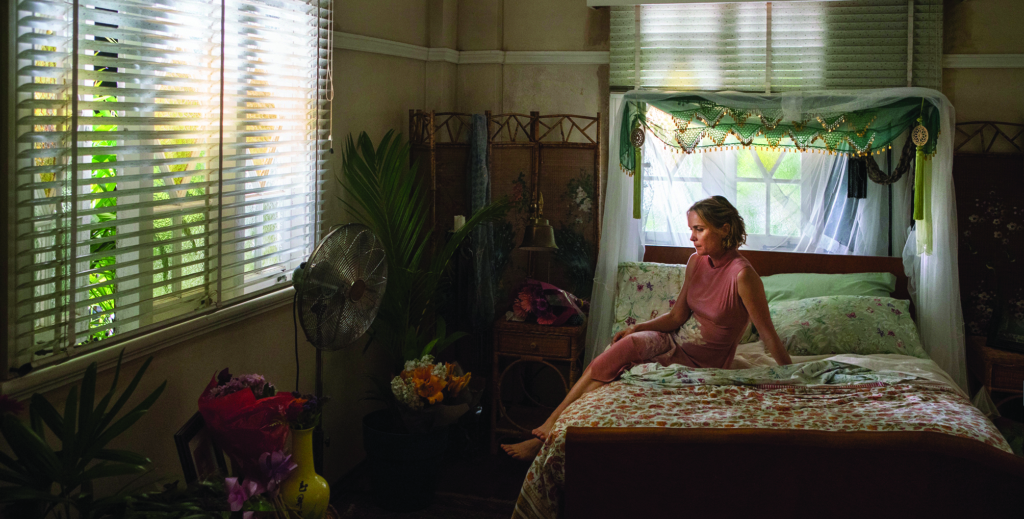
In a tough environment for aspiring filmmakers, close connections with generous mentors can make all the difference. After his Victorian College of the Arts (VCA) graduation short, Martin Four, was selected for the 2001 Cannes Film Festival’s Cinéfondation stream, Hackworth was accepted into the festival’s L’Atelier incubator program in 2006. It was a dream placement he had long hoped for, after having applied and been unsuccessful several times. ‘I became really obsessed [with] getting in,’ he reminisces. ‘Oh my god, three to six months to just write, watch free movies in Paris and hang out with filmmakers from around the world.’ The experience put him in good stead, and he traces the first inklings of what would become Celeste to that incredibly rewarding, supportive and collaborative environment. It’s also where he forged strong connections with such Cannes luminaries as Christian Jeune, Georges Goldenstern and Laurent Jacob: ‘They’ve been really great advocates for my work when sometimes I didn’t feel like I knew where I was, here in this country.’ Hackworth also points to a particular admiration for France’s firm support for directors throughout their careers and its flexible approach to exploring unusual projects – projects like his feature debut, the formalist mood piece Corroboree (2007). Starring Conor O’Hanlon as a young man summoned to an artistic retreat by a dying theatre director (played by Ian Scott), the film depicts the character witnessing re-enactments of key moments in the older man’s life as played out by various actresses.
In a 2007 interview with Senses of Cinema, Hackworth listed Pier Paolo Pasolini, Robert Altman, Federico Fellini, Shohei Imamura and Luis Buñuel as key influences, further noting that
when the filmmaker chooses to involve the audience less with the emotional pathos (or manipulation) of story, then the filmmaker’s approach to the subject and all formal aspects of filmmaking become more transparent for an audience.[3]Ben Hackworth, quoted in Matthew Clayfield, ‘Notes on the Death of Beauty, Art and Talent: A Correspondence with Ben Hackworth’, Senses of Cinema, issue 44, August 2007, <http://sensesofcinema.com/2007/feature-articles/hackworth-corroboree/>, accessed 24 October 2018.
This is a point he re-invokes in our recent chat. ‘I’m more interested in images,’ he says, recalling that he struggled with traditional storytelling at VCA. ‘I have a very photographic mind. Psychological as well, but narrative in terms of plot structure was always harder for me.’ As he was the first VCA student to be recognised with a Cinéfondation selection, Hackworth nevertheless took the accolade as an ‘omen from the gods’ that he was on the right path. His subsequent achievements with Corroboree demonstrated this: it screened locally at the Sydney Film Festival, the Revelation Perth International Film Festival, MIFF and the Brisbane International Film Festival, before making the international rounds at Toronto and Berlin. But Hackworth says he was a little demoralised by the response to the film, which was more lukewarm or antagonistic than embracing: ‘I just felt really estranged from the audience.’
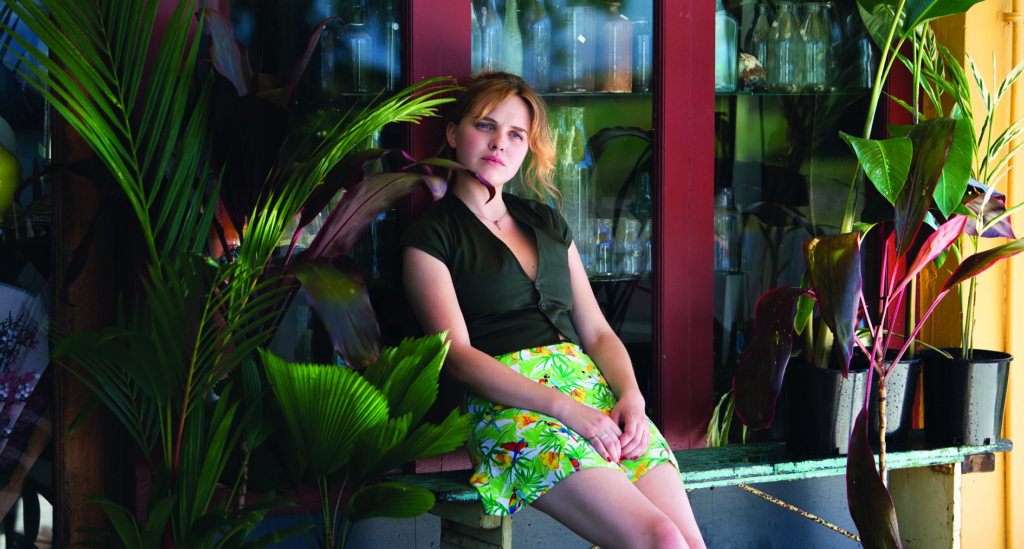
Reconnecting
A decade later, Celeste has been received much more positively following its MIFF bow, with that success due, in so small part, to the sterling performance of Mitchell and the ambiguous parent–child chemistry between Celeste and Cocquerel’s Jack – an intrigue further complicated by the presence of op-shop worker and rival love interest Rita (Odessa Young). ‘That was the other challenge: do I make it into a sex romp or keep the film’s allegorical qualities?’ Hackworth chuckles, reflecting on how he ultimately decided to focus on the suggestion of transgressive desire rather than explicit realisation.
To the filmmaker, Mitchell was the ideal candidate for the central role. He first hit on the idea of casting her while attending Cannes in 2014; there, he saw her play a bamboozled wife in Pascale Ferran’s Bird People, frantically Skyping her Silicon Valley husband who, mid-life crisis in full flow, is bunkering down in an airport hotel on the outer edges of Paris. Hackworth was staggered by her emotional presence at so distant a remove on screen: ‘It was just one of those moments.’ Before this, he had already admired Mitchell from her work in High Art (Lisa Cholodenko, 1998) and Finding Neverland (Marc Forster, 2004), and, the year after Bird People, was impressed all over again by her turn in Looking for Grace (Sue Brooks, 2015). ‘She’s totally different in all of them and there’s something really interesting about her. She makes really strong choices and doesn’t over-emote with her face, which I like.’
To get into the role, Mitchell underwent singing lessons at VCA – not to reach the soaring standard of a professional opera singer, but just so that she could look the part. Her singing voice was provided by Opera Australia siren Celeste Lazarenko. ‘The name coincidence was too weird to pass up,’ Hackworth laughs. ‘She was amazing at finding [Celeste’s] voice, and that helped to make it look real, which was really important because it’s really bad when you can tell someone is miming.’ Young, meanwhile, was the last actor to join the fold and had no time to rehearse with the others. But that didn’t stop her from seriously impressing: ‘She’s an amazing actor […] She just got it all. She knew what her arc needed to be for the story.’
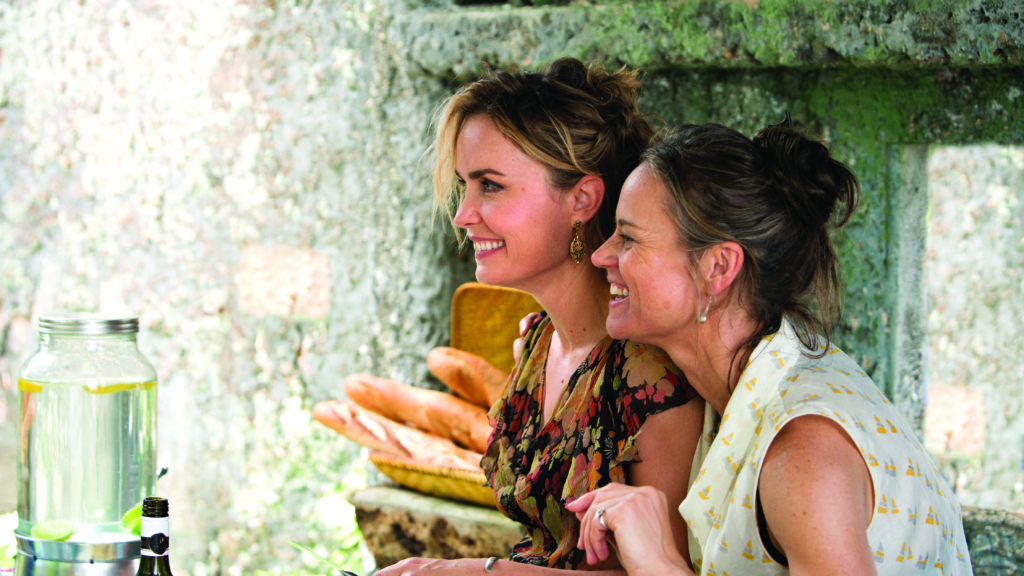
Katie Milwright, Hackworth’s close friend and go-to cinematographer, was also a dependable rock in a challenging locale – one that, within a week of wrapping, was deluged by tropical rainfall. This was especially pressing, given the team had to manoeuvre around the last-minute loss of two weeks’ pre-production to accommodate Mitchell’s schedule: the star had accepted a role in Mad Men creator Matthew Weiner’s new show The Romanoffs towards the end of the hectic shoot. ‘Katie and I have worked together so many times before, so we could make decisions on the fly,’ Hackworth says, noting that they share a very similar vision. ‘She makes really elegant, simple choices.’
Milright’s astute aesthetic choices parallel Mitchell’s wise decision to restrain her portrayal of Celeste’s artistic and personal collapse. We watch as the character’s glorious return is threatened by a muddy past literally disturbing Paronella’s limpid, croc-infested waters, and a cruel twist of fate determines her future under the abundant jungle’s suffocating canopy. Melodrama or not, this hothouse flower really sings.
http://www.unicornfilms.com.au/projects/celeste/
Endnotes
| 1 | Neil Young, ‘Celeste: Film Review | Melbourne 2018’, The Hollywood Reporter, 15 August 2018, <https://www.hollywoodreporter.com/review/celeste-1133416>, accessed 24 October 2018. |
|---|---|
| 2 | Sarah Ward, ‘Celeste: Melbourne Review’, Screen Daily, 9 August 2018, <https://www.screendaily.com/reviews/celeste-melbourne-review/5131456.article>, accessed 24 October 2018. |
| 3 | Ben Hackworth, quoted in Matthew Clayfield, ‘Notes on the Death of Beauty, Art and Talent: A Correspondence with Ben Hackworth’, Senses of Cinema, issue 44, August 2007, <http://sensesofcinema.com/2007/feature-articles/hackworth-corroboree/>, accessed 24 October 2018. |
